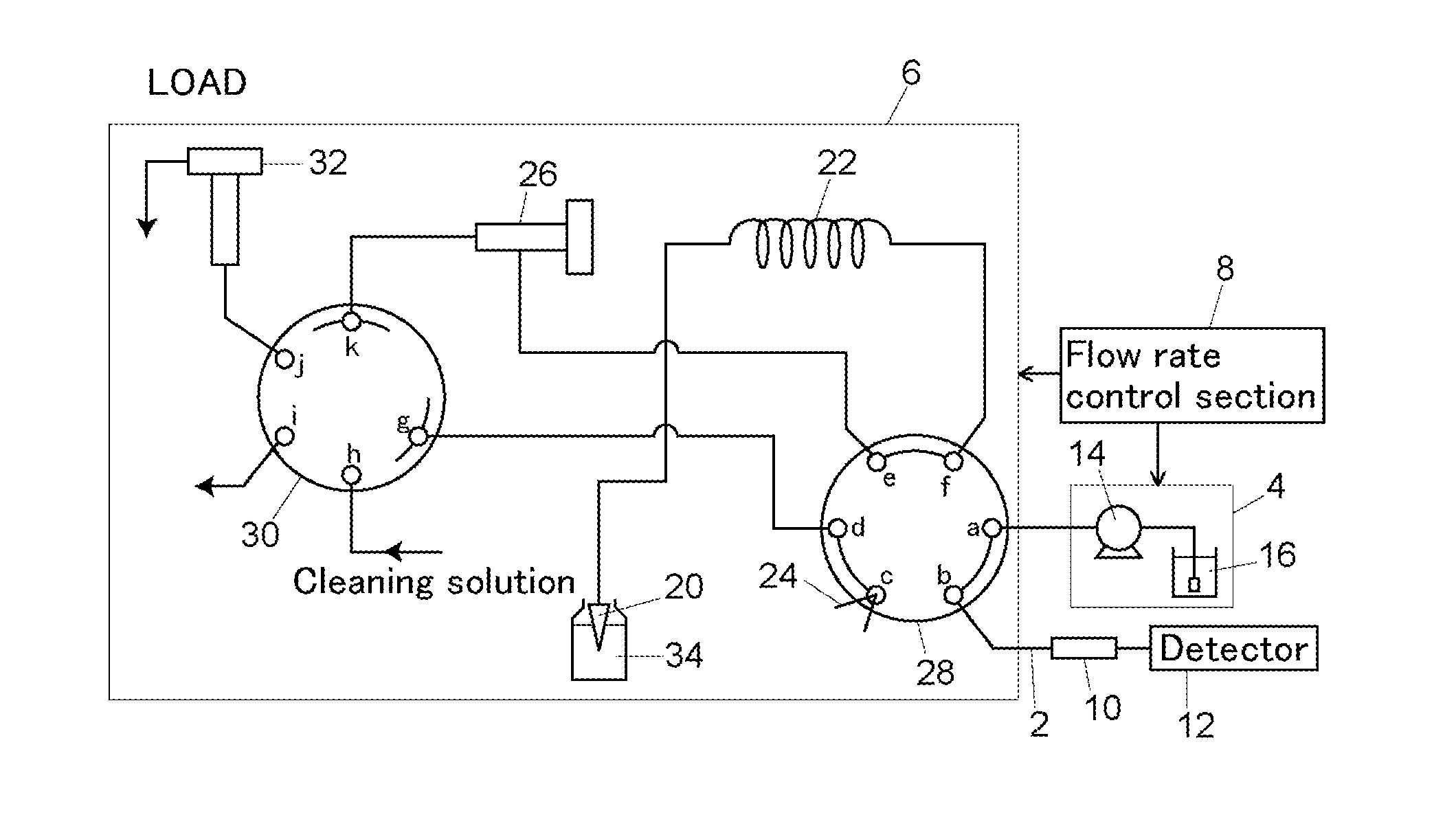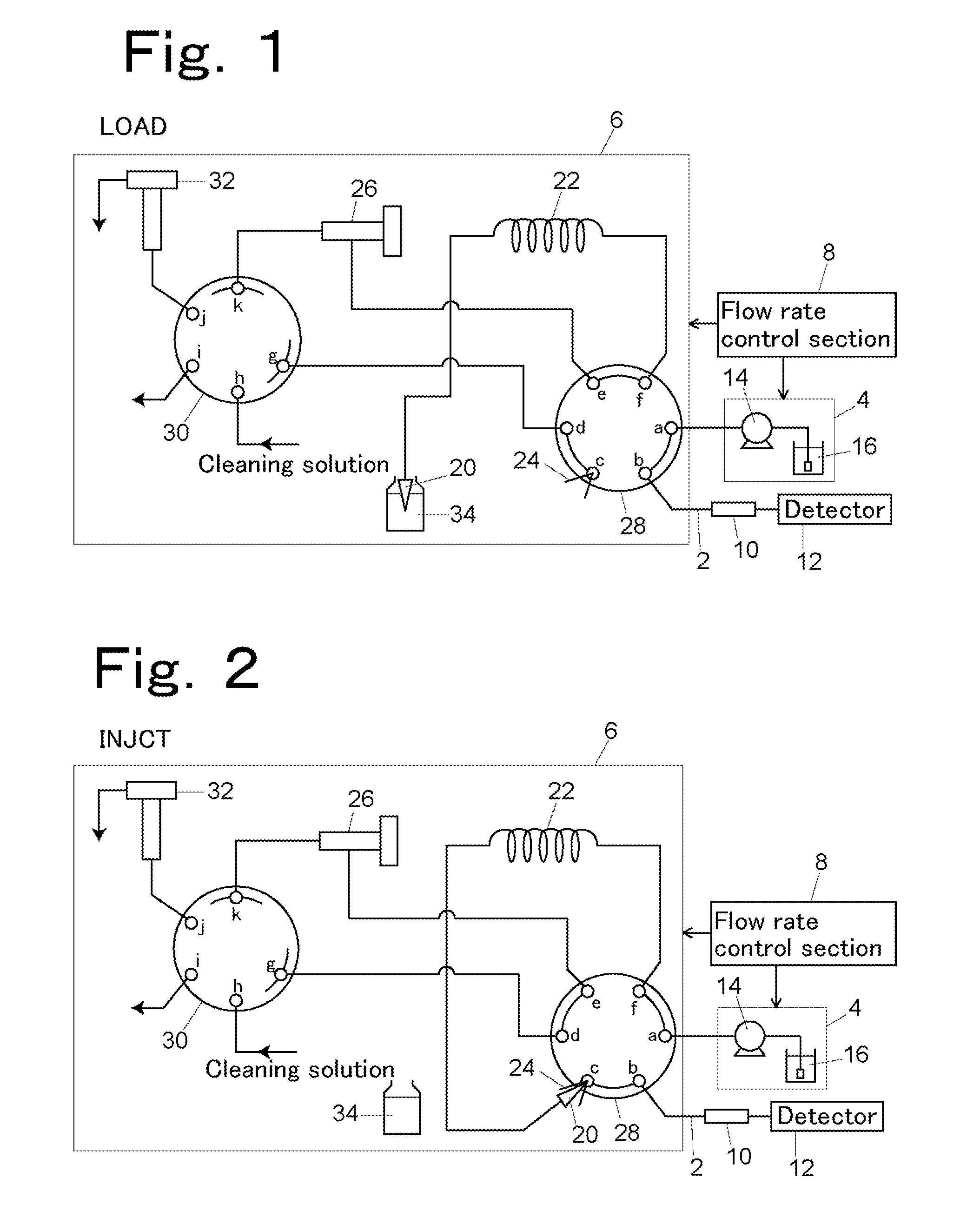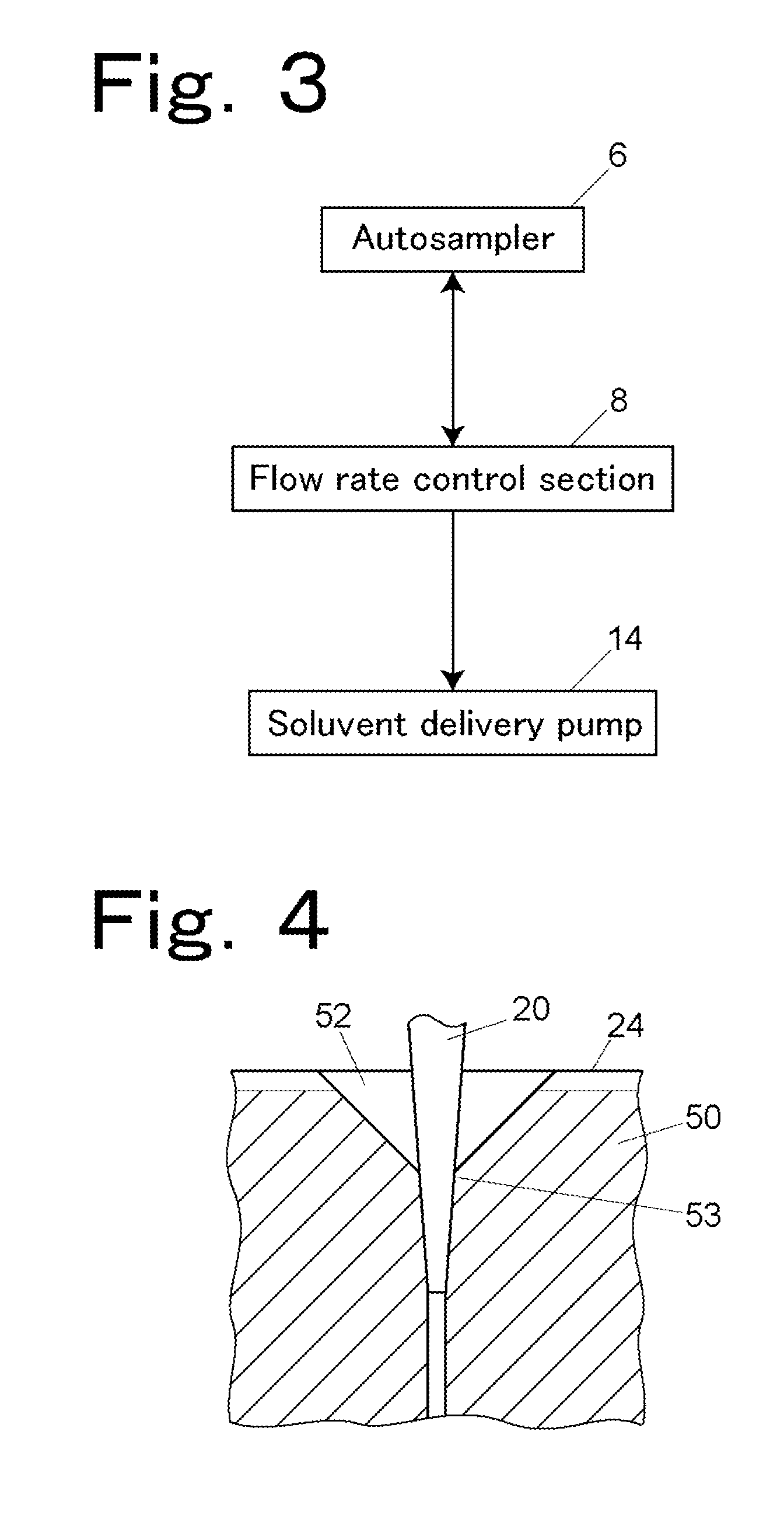Liquid chromatograph
- Summary
- Abstract
- Description
- Claims
- Application Information
AI Technical Summary
Benefits of technology
Problems solved by technology
Method used
Image
Examples
Embodiment Construction
[0039]FIG. 1 shows the high-speed liquid chromatograph in an example in a sample sucking mode (LOAD). The high-speed liquid chromatograph includes an analytical flow path 2, a mobile phase sending section 4, an autosampler 6, and a flow rate control section 8.
[0040]The analytical flow path 2 includes an analytical column 10 disposed on a flow path of a mobile phase to separate an introduced sample into components and a detector 12 for detecting components of the sample separated by the column 10. As the detector 12, an ultraviolet absorptiometer or a mass spectrometer may be used.
[0041]The mobile phase sending section 4 supplies the mobile phase 16 in a mobile phase vessel with a solvent delivery pump 14.
[0042]The autosampler 6 includes an injection needle 20, a sample loop 22, an injection port 24, a metering pump 26, and a flow path switching valve 28.
[0043]The injection needle 20 is connected to a tip end of the sample loop 22. The injection needle 20 is retained on a transfer me...
PUM
 Login to View More
Login to View More Abstract
Description
Claims
Application Information
 Login to View More
Login to View More - R&D
- Intellectual Property
- Life Sciences
- Materials
- Tech Scout
- Unparalleled Data Quality
- Higher Quality Content
- 60% Fewer Hallucinations
Browse by: Latest US Patents, China's latest patents, Technical Efficacy Thesaurus, Application Domain, Technology Topic, Popular Technical Reports.
© 2025 PatSnap. All rights reserved.Legal|Privacy policy|Modern Slavery Act Transparency Statement|Sitemap|About US| Contact US: help@patsnap.com



